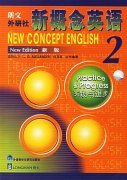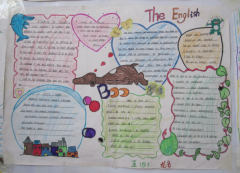初中英语语法大全:形容词和副词(2)
编辑:高中作文网a.前面我们讲到形容词作定语时,位置要放在所修饰的名词前面,但当它带有表示量度的词或词组时,定语后置。
They have built a bridge a hundred meters long.
他们建成了一座一百米长的桥。
Last year we built a building thirteen storeys high.
去年,我们盖了一栋十三层的高楼。
b.带有表示量度的词或词组,作表语时,也后置。
The bridge is a hundred meters long.
这座桥长达一百米。
The building is thirteen storeys high.
这个大楼有十三层高。
They have built a two-hundred-meter-long bridge.
他们已经修建了一座长二百米的桥。
注意
量度词组变成合成语时,作定语用,放在名词前。
Last year we built a thirteen-storey-high building.
去年我们建了一座高十三层的大楼。
c.另外,一些形容词或形容词词组常用来放在句首、句中或句尾,作状语。
He returned home, tired and hungry.
他又累又饿地回到了家。
Cold and hungry, he walked in the street.
又冷又饿,他走在街道上。
B: 副词及其基本用法
1 副词的种类、用法和位置
副词在句子中修饰动词、形容词、副词或整个句子。用来表示时间、场所、状态及程度。
1 副词的种类
1.副词的种类
(1)时间副词
①表示大体时间:now,then,yesterday,today, tonight,before,justnow,recently,so far
②表示频率:always,usually,often,sometimes.seldom,never
③其它作用:already,yet,late,early,soon,at once,immediately,atfirst,at last,finally
(2)地点副词
①表地点:here,there,home,abroad,upstairs,downstairs,anywhere,everywhere,
nowhere,somewhere.
②表位置关系(后接宾语时,用作介词):
above,below,round,around,down,up,in,out,inside,outside,across,back,along,over,
away,near,off,past
(3)方式副词表示谓语动词"怎样地",(此类副词大部分由形容词加ly构成):
badly,bravely,gratefully,calmly,carefully,carelessly,nervously,proudly,patiently,
politely,sadly,properly,rapidly,
wrongly,suddenly.
(4)程度副词 多数用来修饰形容词或副词:much,(a)little,a bit,very,sO,too,enough,quite,rather,completely,terribly,deeply,nearly,almost,hardly
(5)疑问副词 构成特殊疑问句:how,when, where,why
(6)连接副词 连接主语、宾语或表语从句:how,when,where,why
(7)关系副词 引导定语从句:when,where,why
(8)其它性质的副词对整个句子进行说明,一般用逗号与主句隔开:
frankly(坦率地说,说真的),generally(一般说来),luckily(幸运地是),first of all(首先)等。
1.地点副词、时间副词和方式副词一般放在句末
注意
地点副词作定语时要后置,不属于这种情况。有时少数地点副词和时间副词可以作定语,放在所修饰词的后边。
The students here are all from China.
I'll wait for you here.(地点副词)
我将在这儿等你。
I'll meet him at the station tomorrow.(时间副词)
明天我将去车站接他。
Tomorrow I'll meet him at the station.
注意
有时为了强调时间,也可把时间副词放在句首。
The boy wrote the homework quickly.
(方式副词)
这个男孩子写作业很快。
They did their experiments carefully in the labyesterday.方式 地点时间
昨天他们在实验室认真地做实验。
The students all worked well here last week
这些学生上周在这里都做得很好。
2.频度副词在句中位置有以下两种
a.在be动词、情态动词及第一个助动词之后。
She is always kind to us(be动词)
她对我们总是很好。
I can never forget the day.(情态动词)
我永远也不能忘掉这一天。
The work has never been done.
助动词 助动词
(频度副词never放在第一个助动词has的后面)
这件工作永远也做不完。
b.在实义动词之前
He often goes to school early.(实义动词)








